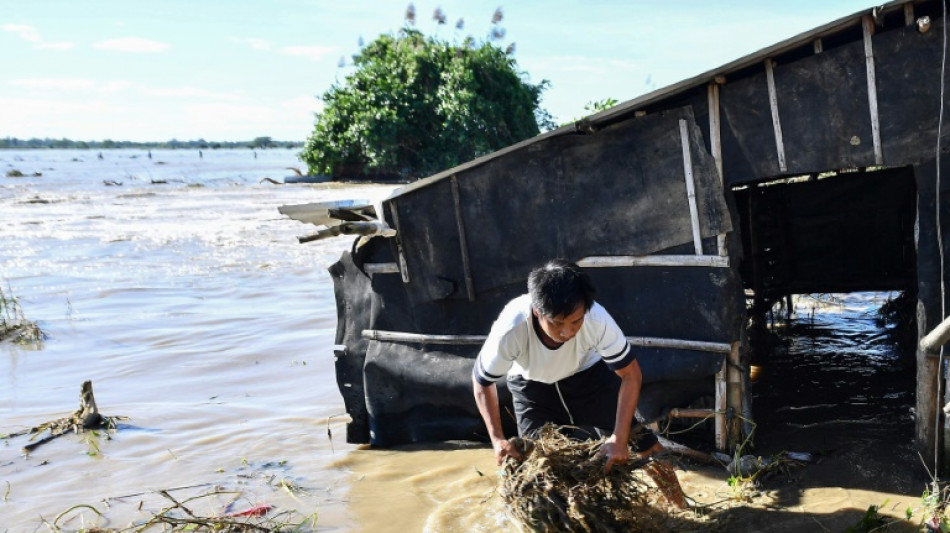
RBGPF
0.0000


Floodwaters reaching more than four metres high swamped thousands of houses in the storm-battered northern Philippines on Tuesday after rivers overflowed following heavy rain and a dam release.
Typhoon Man-yi drenched swaths of the Philippines over the weekend, swelling the Cagayan river and tributaries, and forcing the release of water from Magat Dam.
The Cagayan broke its banks, spilling water over already sodden farmland and communities, affecting tens of thousands of people.
Buildings, lamp posts and trees poked through a lake of brown water in Tuguegarao city in Cagayan province where provincial disaster official Ian Valdepenas said floodwaters reached more than four metres (14 feet) in some places.
"We experienced very heavy rains two days ago, but the flood just started to rise when Magat Dam started releasing huge volumes of water," Valdepenas told AFP.
"Plus, our land is already saturated because of the consecutive typhoons hitting the area."
Man-yi was the sixth major storm in a month to strike the Philippines, which have left at least 171 people dead and thousands homeless, as well as wiped out crops and livestock.
About 20 big storms and typhoons hit the Southeast Asian nation or its surrounding waters each year, killing scores of people, but it is rare for multiple such weather events to take place in a small window.
-- Roofs of houses --
In the neighbouring province of Isabela, Jun Montereal of the Ilagan city disaster preparedness committee said 30,000 people were still affected by flooding.
But the situation was slowly improving.
"The flood is subsiding now little by little, it's slower because the land is already saturated but we are way past the worst," Montereal told AFP.
"We are really hoping that the weather will continue to be fair so the water can go down. I think the water will completely subside in three days," he said.
"I can now see the roofs of houses that I wasn't able to see before because of the floods."
Carlo Ablan, who helps oversee operations at Magat Dam, said three gates were open as of Tuesday morning to release water from the dam.
"If the weather continues to be good, we are expecting that we will only have one gate open this afternoon," Ablan said.
Ablan said flooding in Tuguegarao city was not only caused by water from Magat Dam -- other tributaries of the Cagayan river were also likely to blame.
Valdepenas said authorities in Tuguegarao were waiting for floodwaters to subside more before sending people back to their homes.
"This might start subsiding within today," he said.
More than a million people fled their homes ahead of Man-yi, which struck the Philippines as a super typhoon before significantly weakening as it swept over the mountains of the main island of Luzon.
Man-yi dumped heavy rain, smashed flimsy buildings, knocked out power and claimed at least eight lives.
Climate change is increasing the intensity of storms, leading to heavier rains, flash floods and stronger gusts.
L.Kwan--ThChM